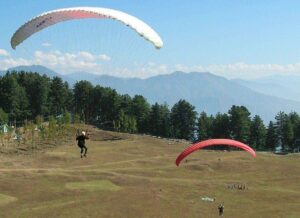Last Updated on November 4, 2020 at 6:13 pm
Jammu and Kashmir is well-known for its variety of plants which have medicinal qualities, aromatherapy and cosmetics. There has been a huge demand for these plants from Europe, China, Japan and other countries which has attracted the smugglers.
According to the researchers, there are 1,123 medicinal plants growing in the Union Territory of Jammu and Kashmir.
Head of the school of biological sciences at the University of Kashmir and a member of the J&K Medicinal Plants Board, Irshad Ahmad Nawchoo, that the majority of the plants are threatened.
Expressing his concerns, he said if there were 500 plants of any species at one place a decade ago, now their number has reached as low as 50. This shows how much medicinal plants have destroyed in the region.
Based on ecological and socioeconomic factors, a study published in two years back in 2018 identified 50 medicinal plant species in the UT as in need of immediate conservative action.
There are 36 biodiversity hotspots in the world and the Himalayas are one of them. The Himalayas are rich in endemic plants found nowhere else on the earth.
Some of the region’s medicinal plants are rarely found anywhere else. The uses of these medicinal plants are extensive. Saussurea costus, is used to treat joint and back pain, fever, ulcers and dysentery. A lotion made from Aconitum heterophyllum is used to cure cough and headache.
There are many factors behind the decline of medicinal plants in the region. One of the main factors behind this decline is smuggling.
However, construction of roads, pollution and stress on habitat also contribute to the decline of medicinal plants. Climate change is also causing plants to grow at higher altitudes. Some species can grow under a specific temperature, when there is an increase in temperature these plants shift upwards and disturb the ecosystem there. Some medicinal plants no longer grow at lower altitudes.
Nawchoo of the University of Kashmir believes that the development of the tourist resorts has led to the huge deforestation. He said that many plants are cut for the construction of a hotel and this loss of trees and this could lead to the loss of habitat destruction and ultimately, lead to the loss of medicinal plants.



